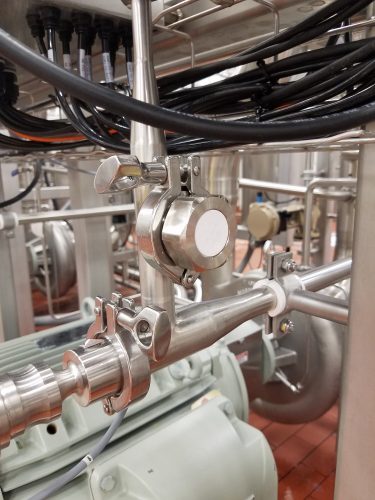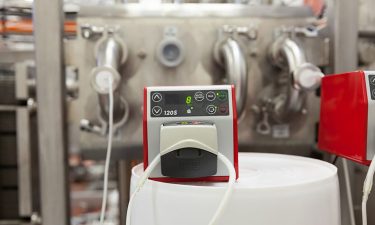Sampling: going back to basics
- Like
- Digg
- Del
- Tumblr
- VKontakte
- Buffer
- Love This
- Odnoklassniki
- Meneame
- Blogger
- Amazon
- Yahoo Mail
- Gmail
- AOL
- Newsvine
- HackerNews
- Evernote
- MySpace
- Mail.ru
- Viadeo
- Line
- Comments
- Yummly
- SMS
- Viber
- Telegram
- Subscribe
- Skype
- Facebook Messenger
- Kakao
- LiveJournal
- Yammer
- Edgar
- Fintel
- Mix
- Instapaper
- Copy Link
Posted: 19 August 2020 | Anne Bigalke, Dr Roy Betts, François Bourdicho | No comments yet
Three experts offer practical considerations for the food industry when it comes to safe and hygienic sampling.


When one refers to microbiological testing, the point of statistical representation and analytical methods are often, if not the only, debated topics. But what about the sample itself? Although we have more and more efficient standards and guidelines in place for validated science-based methods, there is presently a gap in addressing basic, yet essential questions about the sample unit itself. For example, who took the sample? Where and when was it made? How was it taken? What training did the sampler receive?
Lack of guidelines and standardisation
The food sample is not a focus per se in the numerous ISO standards detailing the food microbiological analytical method.
General guidelines are provided for milk and milk products (ISO 707:2008 – IDF50), and the primary food-animal production stage (ISO 13307:2013). Some general guidance for other foods is given in ISO/TS 17728:2015 – sampling techniques for microbiological analysis of food and feed samples. It is, however, not case-specific enough to give clearly defined processes and responsibilities for taking samples along the process chain. The focus is indeed on finished product testing, most recently on processing environment sampling, but there is not yet enough on in-process monitoring sampling.
Microbial risk assessment: How are we sampling precisely?


In-process sampling requires aseptic technique using sterile tools to ensure accuracy
The Codex Alimentarius proposed a definition of the microbiological criterion1 first in 1981, updated in 1997 and 2013. The sample is indeed a component of the microbial criterion: “#46: Records such as test reports should give the information needed for complete identification of the sample, the sampling plan, the analytical method, the results and, if appropriate, their interpretation.” The dedicated guideline of the Codex Alimentarius for sampling2 detail the role of the ‘Sampling Officer’ in charge of taking the sample. The ‘how’ is neither defined nor required.
The risk analysis framework specifies how to carry out the assessment and identify the microorganism of concern, and what decision should be taken by the risk manager. However, when it comes to sampling and testing, the details of what to sample, where to sample, and how to sample at the factory level can be lost in a grey zone between production/operation and quality/laboratory. This can lead to poor sampling choices and methods and, ultimately, incorrect results and poor decision making.
The same point goes for third-party laboratories that take great care of the ‘laboratory sample’ and ensure a well-tracked and controlled history along the analytical process. Yet, almost nothing may be known or even controlled for the ‘production sample’. Only ISO 18593:2018 for swabbing surfaces provides clear guidance on how the sample should be taken and preserved until analysis.
Sampling considerations
Whoever has the responsibility to take the sample should always ask themselves (and document it) the following points:
- What do I need to know about my product?
- What level of accuracy do I need from my sample?
- Does it need to be representative?
It is essential to ensure that the ‘sampler’ has sufficient microbiological understanding and knowledge to ensure that neither the sample nor the process gets contaminated during the sampling procedures. Root cause analysis of non-metallic foreign matter contaminations can occasionally lead to an accident during sampling caused by the food sampler. (Do not always blame the maintenance engineers!)
Aseptic and representative sampling
As previously mentioned, aseptic sampling is mandatory to manage the risk of contamination of the sample itself, and the process or container. The process of taking the sample must not result in contamination of the food processing equipment being samples, either by microorganisms, chemicals, or physical material. The test result is only as good as the sample.
After the final control measure to mitigate the hazard of concern along the process, food contact surfaces are always (or should be at least) in a high hygiene zone. To ensure that the hygienic design of the process is not compromised while sampling you should:
- Always follow aseptic sampling techniques
- Use sterile (and adequate) equipment whenever possible.
During sampling, consideration has to ensure that the sample is representative of the ‘lot’ or ‘batch.’ This may depend on which criterion is considered, for example:
- Food product composition, eg, nutrient composition: If one expects a reproducible production, the sample is representative of the total food production
- Microbial contamination: Considering the expected heterogeneous distribution, probabilistic laws to address total microbial distribution representativity.
The process sample needs a specific container and adequate transportation


When designing a sampling plan you must determine if you need a grab or a representative sample
After all these careful considerations to ensure that the sample is accurately obtained, it still needs to reach the laboratory for further analysis in the best possible condition. ISO standards, such as ISO 17025:2017 or ISO 7218:2007, detail the responsibility of the laboratory in handling samples when they are received. But significant attention must be paid to the way samples are handled in the factory and transported to the laboratory, as is mentioned in ISO 7218:2007: “Although extremely important for the interpretation of the results, sampling and sampling plans are not a part of this International Standard. The laboratory must receive a sample which is representative of the batch of product and has not been damaged or changed during transport and storage”.
Using sterile containers, and ensuring the transportation time and the temperature does not interfere with the analysis by allowing organisms to grow or die, is critically important and requires another set of procedures to ensure that all requirements are respected.
It is essential to agree to these steps with the laboratory. If the sample is potentially compromised, it should not be tested, as it would not be possible to interpret the results. To achieve high quality results, there is a need to define ‘what makes a non-compromised process sample’.
Take-home lessons
Defining the sampling scheme (n,c), the microbial limit (m,M) and the analytical method takes a lot of scientific work.
Why? Who? Where? When? How? These are essential questions that need to be considered, developed, documented and used once you begin the sampling plan.
The training of the employees in charge of the sampling is a significant, yet often forgotten investment that will ensure the global decision process is based on solid foundations.
Conclusion
The pragmatic approach would be to use the mantra: Always start with the basics.
Microbial monitoring within the food industry is a crucial decision-making process. The decisions taken are as right as the sample itself. While it is essential to know the limit of interpretation of a result due to microbial distribution in the food type, as well as ensuring the most appropriate method, a fit-for-purpose decision first needs a fit-for-purpose process sample. Do not underestimate the importance of having the right toolkit in place for the sampling approach, and how it needs to happen on the shop floor.
An inadequate microbial risk assessment leads to poor decisions and a false understanding of the production process and product quality. One would not want to waste considerable investments in state-of-the-art analytical tools, because they did not put in enough effort (tools and training) when obtaining the process sample.
Make sure you have a thorough process outlined, the right sample tools to ensure aseptic technique and representative quality, and a good training program to maintain consistency.
References
1. Codex Alimentarius Commission. Principles and guidelines for the establishment and application of microbiological criteria related to foods. CAC GL 21 1997 Modified 2013.
2. Codex Alimentarius Commission. General Guidelines on Sampling. CAC/GL 50-2004
Disclaimer
The present article represents the opinion of the sole authors, and none of the organisation bodies are represented through their mandates.
About the authors















